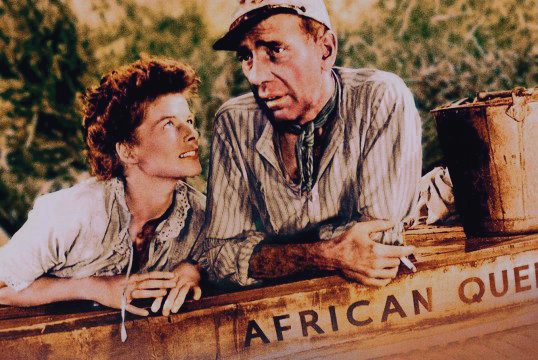War & Cinema: Final
Presentation Options
Choose an option below
and construct a 10-12 minute presentation, including visuals (either powerpoint
with stills or clips from a film you are analyzing). The response to each option should be at
least three paragraphs and posted to the blog – the template is helpful to use
when appropriate.
First
claim, first serve. You can reserve your show/film/game of choice at the end
of class week 7 or email me as soon as you decide. I will be posting taken
shows on the blog (on this post under the option), so please check this post before you email me. Certain options have
unlimited possibilities – this is to ensure that no one presents the same media
twice
You must use three
sources, limited to scholarly articles, newspapers or magazine (no on-line
reviews or forum quotes). Most option include at least one mandatory source—it
is your responsibility to research and find the remaining sources. As always, cite all sources.
Make sure your presentation and clearly presenting an argument or analysis.
Option A:
Television & Violence: Episodic Battle
Read: Television violence and behavior: A
research summary and use it to contextualize an episodic television show
that revolves around war or battle.
You are free to choose the show but note that no show can
be presented twice.
Use the following quote as a jumping point:
Research...has revealed
that violence on television plays an important role in communicating the
social order and in leading to perceptions of the world as a mean and dangerous
place. Symbolic victimization on television and real world fear among
women and minorities, even if contrary to the facts, are highly relate
Please find and deconstruct the social order and symbolic
victimization in the series and include a clip or visual to support your
argument.
Some suggestions: Band
of Brothers, Birdsong, Generation Kill, Game of Thrones, Battlestar Galactia.
Ben H - M*A*S*H
Jake - The Wire
Option B:
The War
Reporter
Read: The
depiction of war reporters in Hollywood feature
films from
the Vietnam war to the present and use it to frame a film that
features a war reporter.
Present a singular film, with a developed war reporter as a
character and present them in relation
to the time period the film was made. The essay chronicles a history of this
archetype, it is important that the function of the character is presented in
its historical context.
Some ideas worth presenting – authenticity, gender issues,
journalistic ethics
Some suggestions: The Bedford Incident
(1965), We Were Soldiers (2002), The Green Berets ( 1968),
The Year of Living Dangerously (1982), Under Fire (1983), Three Kings (1999), War Photographer (2001) – documentary
Bradley Davis - War Photographer
Option C:
Propaganda and Horror Films of the 40’s
Read: OWI Meets the
Monsters: Hollywood Horror Films and War Propaganda, 1942 to 1945, and use
it to frame a horror film from the 1940’s.
Describe the relationship between OWI and Hollywood, specifically
related to the film at hand if possible, and present the most obvious metaphors
and symbols deployed.
Keep in mind the distinction between good and evil and the
possibility of cold war or anti-communist sentiment. Draw distinction between
horror and pathos.
Suggestions: Dead of Night (1945), The Body Snatcher
(1945), The Devil Commands, The (1941), The Ghost Breakers (1940), Man Made
Monster (1941), Beast with Five Fingers, The (1946), Bedlam (1946), I Walked
with a Zombie (1943), The Lady and the Monster (1944), The Picture of Dorian
Gray (1945), The Wolf Man (1941)
Option
D:
War & Comedy
Choose a particular comedic film
and present its simplification of violence or use of satire to reveal truths. Consider
the article, The best humour is satire, and there's a reason we have so little of it
today
You
are required to use professional reviews or articles about your specific film
as your remaining sources.
Suggestions:
Stripes, The Great Dictator, Hot Shot! Part Deux, Catch-22, Kelly's Heroes, To Be Or Not To Be,
Starship Troopers, Bananas
Kerry Kutzer - Catch 22
Christiane Butler - Starship Troopers
Carol Ostling
Aaron Charney - Bananas
Kevin Fisk - Hot Shots
Option E:
Video
Games and the Military
Read, Video
games gaining clout as military training tools & Adapting video games for military
application and present a particular game that promotes engagement with
war.
There are two additional sources Video games sub reading 1 & 2 posted on ecompanion that you
should read as well.
Create a powerpoint with stills and argue in support or
against the use of these games in the military.
The game must contain actual battle or a game cleared for
training purposes.
Mike Mitchell - Mass Effect
Option F:
War Comic
Books in America
Read, The Dream of
Total War and choose a particular war comic and present the clear
distinction of good and evil within a historical and social context.
Bryan Tosh - Sgt. Rock
Option G
The Auteur
& War Cinema
With Auteur Theory as a base, describe how one of the
following directors imprinted their markedly stylistic tendencies in a war
film.
Read, The Auteur Theory of Film: Holy
or Just Full of Holes? And make a case in support of or
suspicion of auteur theory.
Must choose from one of the following directors:
Yi Manhui (article provided) - Taken by Jin
Errol Morris - Taken by Mark
Steven Soderbergh
Akira Kurosawa
David Lean - Taken by Andrew
Option H
Feminism & War



